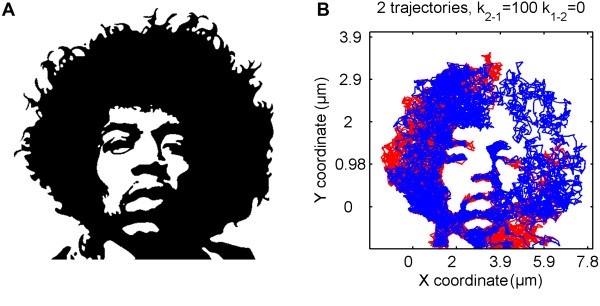Winglessness in the ancient moa • Battle of the sexes starts in the oviduct • Undetected anorectal chlamydia • Single molecule tracking • Health needs in the aftermath of 9/11 • 3D printing improves embryo screening
 Evolution: Winglessness in the ancient moa
Evolution: Winglessness in the ancient moa
Limb loss by regressive evolution is widespread in nature e.g. whales, snakes and some salamanders. Loss of forelimbs is also found in the ratites: a diverse group of birds that includes the ancient giant moa, a species endemic to New Zealand that was driven to extinction by humans in the 15th century. One of the key genes essential to the development of forelimbs in most animals is tbx5. Here, Huynen and colleagues reconstruct, build and characterize tbx5 to investigate the molecular basis of winglessness in the giant moa. Their results indicate that tbx5 must have played an important role in the moa’s remnant forelimb girdle, but it was changes to other genes that caused the moa to lose its wings. Find out more about these giant flightless birds over on our blog.
Genomics: Battle of the sexes starts in the oviduct
Is sex allocation of offspring in mammals just a matter of chance? Here, Almiñana and colleagues investigate an alternative hypothesis that oviducts can recognize X and Y spermatozoa and thus bias the offspring sex ratio. This was tested by examining whether spermatozoa elicited different transcriptomic responses within the oviduct of a female pig. The results of a microarray analysis revealed 501 transcripts that were consistently altered in the oviduct in the presence of Y chromosome-bearing spermatozoa compared to X chromosome-bearing spermatozoa. These transcripts contained a high representation of signal transduction and immune-related genes. The investigators conclude that the oviduct is a biological sensor that can fine-tune its physiology and gene expression in response to X and Y spermatozoa.
Infectious Diseases: Undetected anorectal chlamydia
Chlamydia can cause anorectal infections in women as well as infection of the urogenital tract. Current recommendations include restricting testing to people in high-risk groups that report anal sexual behaviour or have anal symptoms. Here, 663 women attending an STI-clinic were offered routine testing for anorectal and urogenital chlamydia. Results revealed an alarmingly high number of women with anorectal chlamydia; of all women with urogenital chlamydia, 71% had co-occurring anorectal chlamydia. Two thirds of the anorectal chlamydia infections were being missed. Van Liere and colleagues conclude that current selective testing on indication of symptoms and sexual history is not an appropriate control strategy for anorectal chlamydia.
Image of the month:
 Simulation of two particle trajectories using single molecule tracking. From “TrackArt: the user friendly interface for single molecule tracking data analysis and simulation applied to complex diffusion in mica supported lipid bilayers” Matysik and Kraut BMC Research Notes 2014, 7:274
Simulation of two particle trajectories using single molecule tracking. From “TrackArt: the user friendly interface for single molecule tracking data analysis and simulation applied to complex diffusion in mica supported lipid bilayers” Matysik and Kraut BMC Research Notes 2014, 7:274
Public Health: Health needs in the aftermath of 9/11
Little is known about the unmet mental health care need (UMHCN) of people exposed to the 9/11 terrorist attacks in New York. Ghuman and colleagues report data from 9,803 people who had Post Traumatic Stress Disorder or Depression 10-11 years after being exposed to the disaster. Just over one third reported a UMHCN, occurring due to a range of attitudinal, cost and access barriers. People who had more severe and disabling conditions, who lacked health insurance and who had low levels of social support were most vulnerable.
Biotechnology: 3D printing improves embryo screening
Whilst zebrafish is the main vertebrate model system for whole organism screening applications, there is a lack of consistent partitioning and positioning of zebrafish embryos within microtiter plates that hinders the scoring of detailed morphological or cellular phenotypes. Here, Wittbrodt and colleagues introduce a cost effective method for the production of 96-well plate compatible zebrafish orientation tools using a desktop 3D printer. This new method is readily reproducible and digital 3D models can be easily shared, thus improving access to the developed tools.
![]() Follow @BMC_series
Follow @BMC_series
![]() Watch our YouTube channel
Watch our YouTube channel
![]() Browse our list of journals
Browse our list of journals
![]() Subscribe to updates from the blog
Subscribe to updates from the blog
Comments